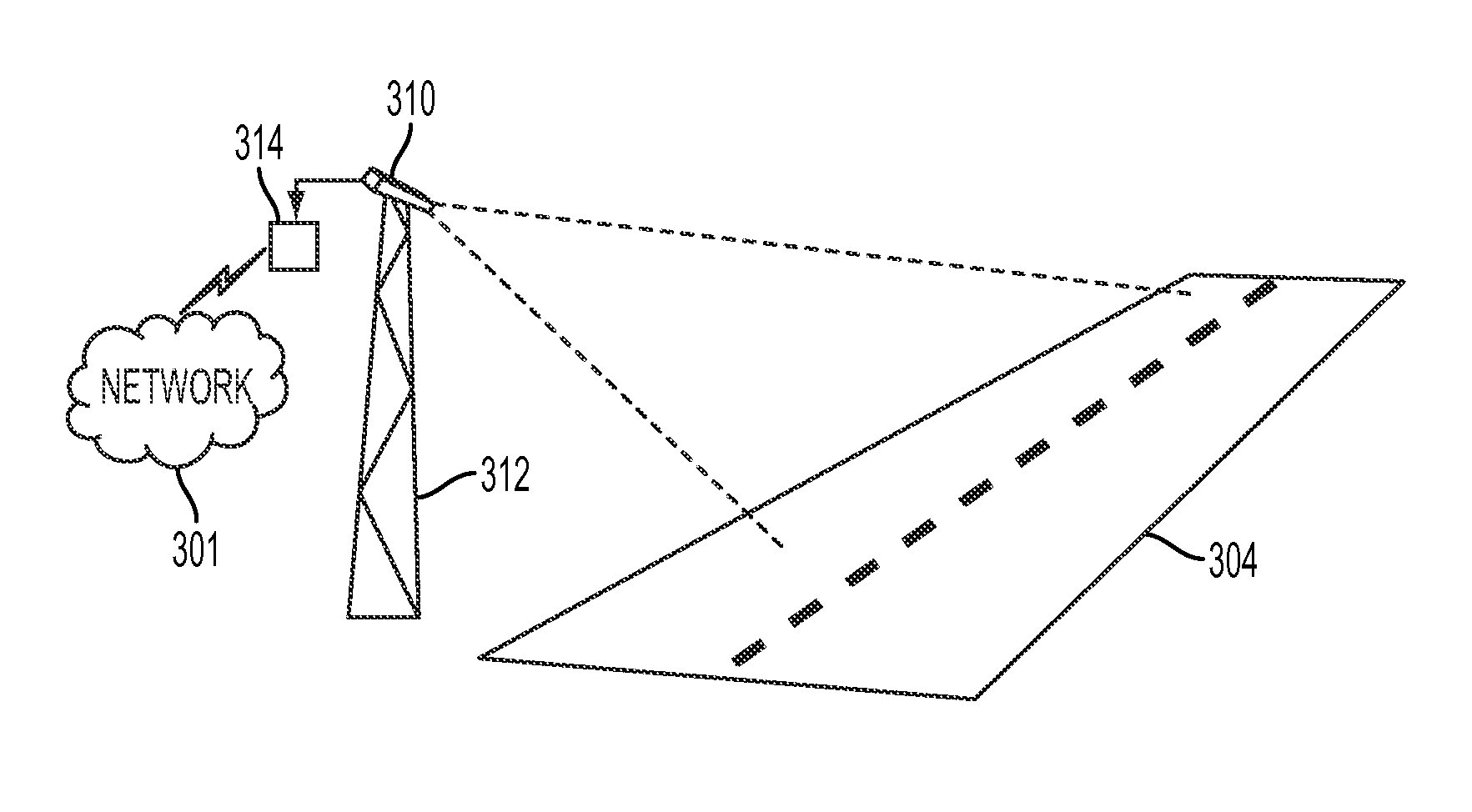Vehicle speed determination via infrared imaging
a technology of infrared imaging and speed determination, applied in the direction of electric/magnetic computing, analogue processes for specific applications, instruments, etc., can solve the problems of inability to place vehicle features at fixed heights, and the speed calculated by analyzing non-stereo images taken of moving vehicles tends to lack the accuracy required for law enforcement, so as to eliminate trigonometric calculations for height correction, accurate speed detection, and high contrast
- Summary
- Abstract
- Description
- Claims
- Application Information
AI Technical Summary
Benefits of technology
Problems solved by technology
Method used
Image
Examples
example networked embodiment
[0029]Reference is now being made to FIG. 4 which illustrates the embodiment of FIG. 3 wherein further aspects of the present system are illustrated.
[0030]IR camera system 310 and controller 314 may incorporate wired and / or wireless elements and may be connected via other means such as cables, radio, or any other manner for communicating known in the arts. Network 301 can receive signals transmitted from tower 411 and wirelessly communicates those signals to any of: workstation 413, graphical display device 414, and / or multi-function print system device 415. Signal transmission system 411 is also in wireless communication with handheld cellular device 416 and tablet 417. Workstations 413 and 414 are in communication with each other and multi-function document reproduction device 415 over network 301 including devices 416 and 417 and IR camera system 310 and controller 314. Such a networked environment may be wholly incorporated within the confines of a single building or may be dist...
example captured
IR images
[0034]Reference is now being made to FIG. 5, which is a series of three related FIGS. 5a, 5b and 5c. FIG. 5a and FIG. 5b show two IR images captured of a target vehicle 116 travelling on a road 304, using the IR imaging system shown and discussed with respect to the embodiments of FIGS. 3 and 4. The IR images may be still images that are captured at different times, or they may be separate frames taken from a video sequence. Using standard calibration procedures, pixels within these images may be converted to real-world coordinates. However, since a 3-dimensional real-world scene is projected onto a 2-dimensional image, there is inherently some loss of information, unless a stereo imaging system is used, wherein pairs of images from two different positions are captured. The discussion here is limited to non-stereo images. Using procedures known in the art, it is possible to uniquely determine two of the dimensions if the third dimension is known. For example, if the height ...
PUM
 Login to View More
Login to View More Abstract
Description
Claims
Application Information
 Login to View More
Login to View More - R&D
- Intellectual Property
- Life Sciences
- Materials
- Tech Scout
- Unparalleled Data Quality
- Higher Quality Content
- 60% Fewer Hallucinations
Browse by: Latest US Patents, China's latest patents, Technical Efficacy Thesaurus, Application Domain, Technology Topic, Popular Technical Reports.
© 2025 PatSnap. All rights reserved.Legal|Privacy policy|Modern Slavery Act Transparency Statement|Sitemap|About US| Contact US: help@patsnap.com



